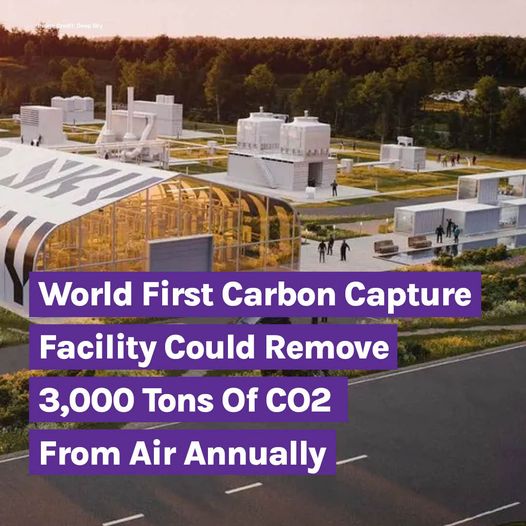In an exciting development, Deep Sky, a Canadian carbon capture and removal company, has announced plans to build the world’s first carbon removal innovation and commercialization center in Innisfail, Alberta. This facility, which could capture up to 3,000 tons of CO2 per year, represents a significant step forward in the global effort to combat climate change. Below, we explore the details of this ambitious project and highlight other similar initiatives around the world.
The Deep Sky Carbon Removal Facility

Deep Sky’s facility, set to be located an hour north of Calgary in Innisfail, is designed to serve as a testing ground for innovative carbon capture technologies. The center will host up to 10 different Direct Air Capture (DAC) technologies, aiming to remove 3,000 tons of CO2 annually from the atmosphere.1 Although this figure may seem modest, it marks the beginning of a new era in carbon removal efforts, with the potential to scale up significantly in the future.
A Hub for Innovation and Commercialization

Beyond its role in carbon capture, the facility will also function as a center for innovation, providing a platform for the development and commercialization of new carbon removal technologies. This approach is expected to accelerate the growth of the carbon capture industry in Canada and beyond. Deep Sky’s CEO, Damien Steel, emphasized the importance of this project, stating that it serves as a “testing ground from which the nascent industry can grow into Canada’s multi-trillion-dollar enterprise”.
Addressing the Challenges of Carbon Credits

One of the key objectives of the Deep Sky facility is to produce high-integrity carbon credits. The global carbon credit market has faced criticism due to the questionable effectiveness of some credits, but Deep Sky aims to address these concerns through rigorous digital Measurement, Reporting, and Verification (MRV) standards. By ensuring the accuracy and transparency of its carbon credits, Deep Sky hopes to set a new standard in the industry.
Global Carbon Capture Initiatives: Climeworks in Iceland

Deep Sky’s project is part of a broader global effort to scale up carbon capture technologies. For instance, Climeworks, a Swiss company, has a “Mammoth” direct air capture plant in Iceland, which should remove up to 36,000 tons of CO2 annually.2 Like Deep Sky, Climeworks is leveraging renewable energy to power its facility, utilizing Iceland’s geothermal resources to drive its operations.
Noya’s Modular Carbon Capture Systems

Another notable initiative is Noya, a startup focused on accelerating direct-air carbon removal with low-power, modular systems. Noya’s approach is to deploy scalable units that are easy to produce and stack like LEGO blocks to achieve significant carbon removal capacity.3 The company’s first commercial-scale facility aims to remove millions of tons of CO2 annually, highlighting the potential for rapid expansion in this sector.
The Role of Carbon Capture in Global Climate Goals

Carbon capture and storage (CCS) technologies, including those developed by Deep Sky, Climeworks, and Noya, play a crucial role in global efforts to mitigate climate change. The United Nations has emphasized the need for both emission reductions and carbon removal to avoid the worst impacts of climate change. While these technologies are still in their early stages, the projects underway demonstrate significant progress and the potential for large-scale implementation in the coming years.4
The Future of Carbon Capture and Climate Action

The launch of Deep Sky’s carbon removal facility marks a critical step toward a future where carbon capture technologies become a key component of global climate action. As these technologies continue to evolve and scale, they offer a promising solution to one of the most pressing challenges of our time—reducing atmospheric CO2 levels to mitigate the effects of climate change. The success of projects like Deep Sky’s could pave the way for a new era of environmental innovation and sustainability.
